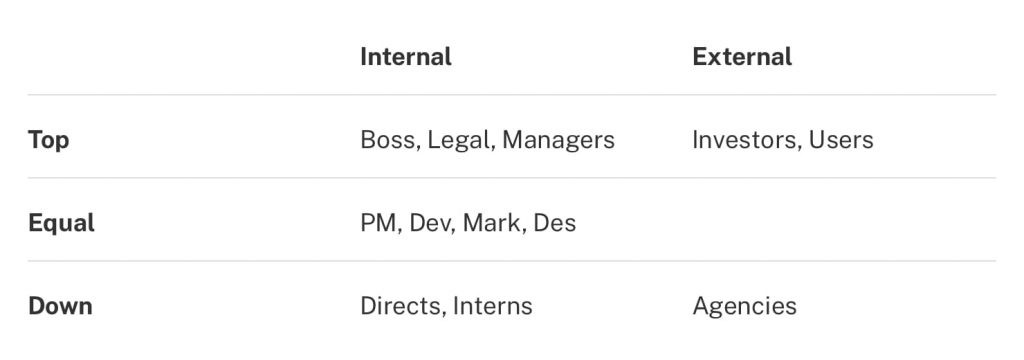About different perspectives and how we designers can make it work.

﷽
From the shining eyes of the audience and the smile on their faces, you could see that the head of a digital accelerator had hit a nerve. He gave a very vivid description of how he set up his exclusive studio. It was his design team that decided the topics they wanted to work on and with which team. They defined the requirements under which the project should take place and what the design process looks like. He made sure that nothing disturbed the calm of his studio. Only in this protected environment his team was able to create these amazingly beautiful results. (Unfortunately this is not the only time I’ve seen such a story.)
Naive romance
Young designers too often have the romantic idea of a perfect design environment in which they are the driving force behind design and product decisions. They want to control the process from an ivory tower. On the one hand, this is due to the fact that we mostly restrict * design * to its visual properties — and therefore do not do justice to the discipline. On the other hand, the involvement of other stakeholders in our process is very challenging and can be tiring: External factors such as budgets, technical feasibility or business policy often thwart our deliverables.
Influencing factors
If we think of the stakeholders with whom we come into contact every day, it becomes clear that we generally interact a lot (more) with people who are not designers.

Designers who create solutions for video verification must adapt their designs to legal data protection regulations. Here the legal department becomes the determining design factor. Designers who create mobile web applications such as social networks must ensure that their pages load quickly. Here web development is the determining design factor.
Not all stakeholders will influence our work the same way. Some will have more influence on our processes and results, some less. But there will be factors, which could prevent us in achieving our desired outcomes.
If we don’t involve our non-design bosses and peers at eye sight in our process and get them to hear our users’ voices, the quality of our results will suffer. In doing so, we ignore important perspectives that weaken the effect of our designs or even make them completely irrelevant. Regardless of whether the result meets our qualitative design requirements or not. We do ourselves a great favor by welcoming these factors rather than excluding them.
Influencing upwards
Whoever the Head of Design reports to automatically becomes the new Head of Design. https://t.co/5CG1IQZ6zl
— Jared Spool (@jmspool) November 23, 2019
Not every designer is in the luxurious situation to have a CDO, VP of Design or a Head of Design as a manager who sets the course so that we can do our work in the best possible way and achieve the greatest possible success. Whoever stands above you will have a strong influence on the process, the means, the resources and ultimately on the outcome. I was e.g. ever in the situation where my supervisor considered user research to be unnecessary and therefore did not free up the means and time for it. That of course had a negative impact on the quality and therefore the impact on business. I was not happy about it, but in the end, it’s a design decision as much as it was a (bad) business decision.
Lead the conversation
It is therefore essential to proactively try to influence top-down decisions. The earlier we identify important stakeholders and try to influence them using data, the more relevant our work becomes. And there is good news for designers: With our methods, we have the best tools to do this in a targeted and orderly manner. On the one hand, this increases the importance of our jobs because we understand and integrate business-critical perspectives right from the start. On the other hand, we get more substantial feedback, especially from non-designers, who go beyond superficial opinions like “I don’t like this design”. The moderation and orchestration of conversations are becoming more important for designers than the craft itself.
Accept the challenge
There are different ways to get the required buy-in from higher-level stakeholders and to integrate different perspectives into the design process. While some measures are political in nature, others are very pragmatic. Here are three obvious ways to address the problem.
Form alliances
In a great post, David Stoker describes how to persuade other stakeholders to be on your side in non-design environments. In a conversation, a designer friend told me that as a freelancer, he chose the programmers he needed to get his designs implemented. He understood, that those developers would have the biggest influence on the designs. So he regarded them as designers and involved them equally.
Master the language of the data
The other way round, we should also participate in conversations far from design. This happens at different altitudes. When it comes to strategic issues, it is essential to have data at hand. While PMs communicate their product KPIs, developers their velocity and technical performance, marketing people their audiences and campaigns, we can score with user research. It can be a short clip of a usability test session with a user or a crisp report to convince the participants of our mission. This way we speak their language, become the master of our process, and finally get a place at the table of “the big ones”.
Design Thinking
In my opinion, design thinking is the best way to bring different perspectives together and to include them actively and specifically in designs. It illuminates the entire process from collaborative ideation, through concrete conceptual elaboration, to testing with users. Every step is relevant for all stakeholders and creates strong ownership among all participants.
So…
Let’s be good hosts, open our ivory towers, and let other stakeholders enter as well.